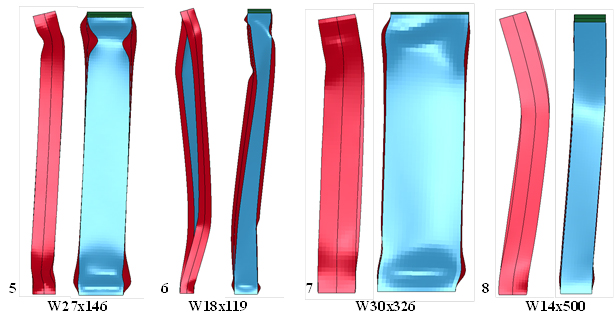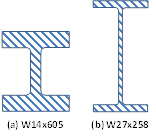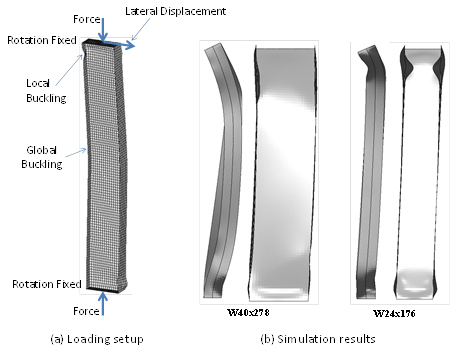Sherif El-Tawil, PhD, PE
Professor and Associate Chair
Department of Civil & Environmental Engineering | The University of Michigan
Seismic Response of Deep Steel Columns

Failure modes of deep steel columns under axial loading and lateral drift
The 1994 Northridge Earthquake shook the faith of the structural engineering community in then prevalent seismic design provisions for steel buildings. The unexpected non-ductile failure of seismically designed steel moment connections motivated the SAC Steel Project, a joint research venture between the Structural Engineering Association of California (SEAOC), Applied Technology Council (ATC) and Consortium of Universities for Research in Earthquake Enginering (CUREE). Among the many issues that arose during the research effort was that then-existing steel column provisions were deficient.
Before Northridge, almost all steel columns used in seismic zones were W14’s. Such shallow columns were popular because they have a small footprint, thereby maximizing architectural flexibility. However, the new provisions that emerged from the SAC Project made it challenging to continue to design columns using W14 sections because their small depth made it difficult to satisfy the new and more stringent design requirements. To alleviate this problem, engineers turned to deeper steel columns, but that trend generated new concerns regarding their ability to resist the torsional demands that arise when plastic hinges form in connected beams. Figure 1 shows the types of sections being discussed.

Figure 1: Shallow vs. deep columns
When used in tall moment resisting frames, lower floor column members can be subjected to high axial loads due to seismically induced overturning moments. When deep columns are used, their lower torsional characteristics compared to, say W14 sections, make them especially vulnerable to lateral torsional instability under combined axial and lateral loading. Ongoing experimental and computational research has clearly shown that deep sections can be particularly susceptible to synergistic instabilities (Figure 2), i.e. where local and global instabilities promote one another to significantly lower column axial load capacity.

Figure 2: Unusual failure modes for high aspect ratio columns at low demands